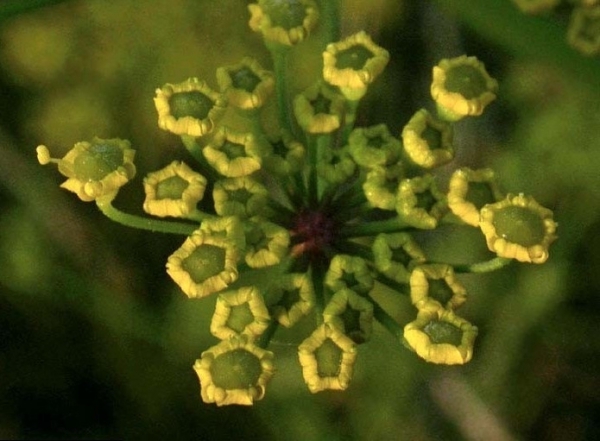WESTMINSTER WEST — Randolph T. Holhut describes the wild, or “poison,” parsnip as “a new invasive species for Vermonters to be worried about,” and also as a “genetic mutation of garden parsnip.”
However, in reviewing the literature, I could not find evidence that this is true. A recent study published in the peer-reviewed journal Invasive Plant Science and Management found no genetic difference between wild parsnip and cultivated parsnip, both known as Pastinaca sativa. There was high genetic diversity within populations of both the wild plants and the cultivated plants, a trait that makes them well-adapted to a variety of ecological conditions.
The parsnip, like so many of our common garden vegetables, is not native to North America, but it has been here since both French and British colonists brought it, probably in the 1800s, so it is not exactly a “new” species in our lands. The cultivated parsnip itself was selected from a wild variety (as most plants domesticated for culinary use were selected from wild relatives), and apparently the cultivated version has jumped back over the garden gate.
If this “wild” parsnip has become more populous of late, perhaps it is because there is more disturbed land (i.e. roadsides, tilled and then abandoned agricultural fields, or land eroded by flooding) in which it thrives. In the midwest, where the wild parsnip is abundant, land managers say that it is unlikely to “invade” well-established prairie (land disturbed by humans where the plant may become abundant).
I can attest that the cultivated parsnip is just as poisonous as the wild. Parsnip is a biennial - if you let it grow, it will send up a tall flower stalk in the second year and look much like the wild version.
Once I let some garden parsnips grow into a second year so as to save their seeds. When I cleaned out the bed, cutting the tall stalks on a hot sunny day, I developed severe phytophotodermatitis, the very painful series of blisters as the article described. You can get this condition whenever the sap from the cut stems or leaves gets on your sweaty skin and your skin is then exposed to sunlight.
So, yes, you should be cautious when working with parsnip, but it is unfair to the plant to label one version “poison parsnip” and blame it for being a “new invasive,” likely to “attack.” This language, in my view, perpetuates the idea that anything “new” or “non-native” is dangerous.
Let's not blame the plant for “escaping” cultivation and growing happily along our roadsides - we brought it here, after all, and we very much value its sweet and highly nutritious roots.
By the way, the wild parsnip root is just as tasty as the cultivated. The plant contains chemicals called furanocoumarins in order to fight off herbivores (insects or other predators). Such an ingenious strategy for self-defense should be admired, not denigrated.
If you can recognize the plant in its first year, a good way to remove it from where you don't want it would be to harvest and eat it! (The second-year plant, the one with the flowers, does not have an edible root.)
It might seem silly to quibble with words in this case, but I find the language around “invasive species” often parallels anti-immigrant, xenophobic attitudes, and, as with xenophobia, the rhetoric is often based on fallacies. If we're going to be “worried” as the article urges us to be about “poison parsnip,” we should be careful to base those worries on accurate information around when and how the plant may cause us harm, just as we should get accurate information before we become “worried” about the harm people we perceive as “different” might cause in our communities.
